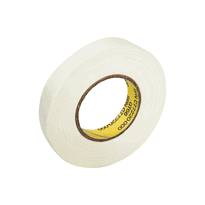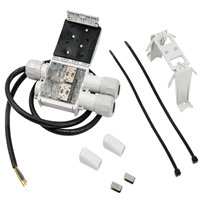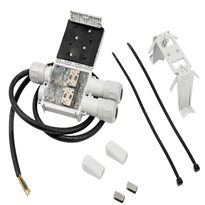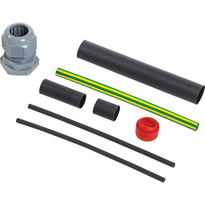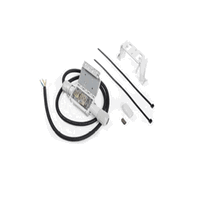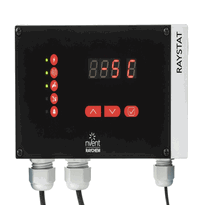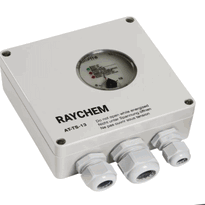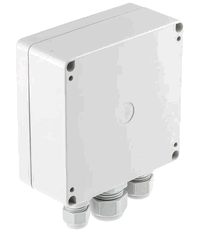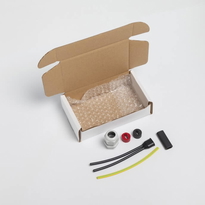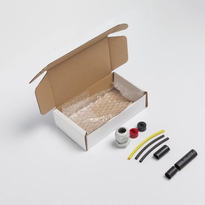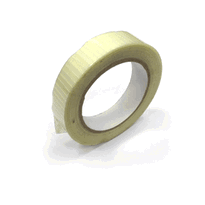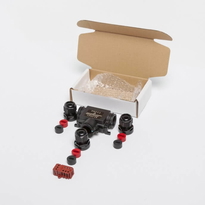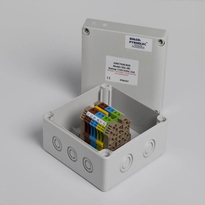Heat Cable for Pipe Freeze Protection
Heat cables designed for pipe freeze protection utilize electrical resistance to generate controlled heat, preventing water pipes or industrial pipelines from freezing in cold weather. Self-regulating cables adjust their heat output based on the temperature of the pipe, which enhances efficiency and safety.
Proper installation involves securing the cable neatly along the bottom of the pipe, ensuring continuous contact. Outdoor installations often require airtight sealing to prevent moisture ingress and improve performance.
Maintaining safety standards is essential; this includes regular inspection for damage, ensuring proper electrical connections, and using protective devices such as circuit breakers or earth leakage protection. For those seeking comprehensive guidance, detailed installation procedures and safety advice are outlined below.
Understanding Different Types of Heat Cables and Their Features
When selecting a heat cable system for pipe freeze protection, it's crucial to understand the various types available and their specific features. Electric heating cables are by far the most commonly used, offering a range of options to suit different applications.
Self-regulating cables are particularly popular because they automatically adjust their heat output based on temperature, helping to prevent overheating and reduce energy consumption. These cables are designed using advanced polymer cores that alter their electrical resistance, providing efficient and safe operation.
In-pipe heating cables, such as Retro-Line, are designed to be installed directly inside the pipe. This ensures continuous protection, even when pipes are dry or only intermittently flowing. This makes them ideal for certain industrial and commercial settings.
Traditional constant wattage cables provide a fixed amount of heat along their length. While simple in design, these cables often require external controllers or thermostats to ensure optimal performance and prevent overheating.
To improve flexibility and simplify installation, some cables can be trimmed at the site to fit specific pipe sizes precisely. This reduces waste and installation time.
Most heat cables are manufactured to be waterproof and fire-resistant, ensuring safety and durability in various environments.
They're compatible with a wide range of pipe materials, including plastics and metals, making them versatile options for many applications.
A new development in heat cable technology is that some models now feature built-in diagnostics, allowing for easier troubleshooting and monitoring of the system's performance. This main factual point enhances safety and ensures reliable operation over time.
Proper Installation Techniques and Best Practices
Proper placement and routing of heat cables are essential components of an effective freeze protection installation. Heat cables should be installed straight along the bottom of horizontal pipes to ensure efficient heat transfer and prevent cold spots where water could pool. For vertical pipes, mounting the cable on the "weather side" exposes it to prevailing cold winds, which enhances its performance. Cables shouldn't cross or spiral beyond their standard lengths, as this could cause overheating or damage. Instead, use parallel runs for larger or irregular pipes, employing two cables in opposition. Securing the cables involves attaching them every 15 to 30 centimeters with electrical tape or ties, ensuring they maintain direct contact with the pipe surface. Proper insulation, sealing, and adherence to electrical safety protocols further optimize system reliability and energy efficiency. Additionally, always verify that the installation complies with local electrical codes and manufacturer instructions to ensure safety and effectiveness. Proper installation practices also include inspecting the entire system periodically to identify potential issues early.
Key Applications and Scenarios for Pipe Freeze Protection
Heat cables play an essential role across a broad range of applications, each with distinct requirements for freeze protection in diverse environments. In residential and commercial settings, water supply lines such as outdoor pipes, crawl spaces, and unheated basements are prone to freezing and potential bursting during cold weather.
By maintaining the pipe temperature above freezing, heat cables help prevent costly repairs and water damage. When used alongside insulation, these cables become even more effective in safeguarding vulnerable pipes through the colder months.
In the industrial sector, pipelines involved in oil, gas, and energy production face similar freeze risks that can disrupt operations and lead to expensive damages. Continuous heat tracing, often combined with appropriate insulation and antifreeze measures, ensures the integrity and functionality of these critical pipelines in low-temperature conditions.
Safety equipment, such as eyewash stations and emergency showers, also requires reliable freeze protection. Ensuring these systems remain operational is vital for compliance with safety standards and the well-being of workers, particularly in cold environments.
Outdoor and remote installations, including farms and water stations, rely heavily on heat cables to sustain operation in harsh climate conditions. Self-regulating cables are a popular choice here, as they optimize energy use by adjusting their heat output based on ambient temperature, thus providing an efficient and cost-effective solution. Additionally, airtight tapes can be used to seal and secure heat cable installations, enhancing overall system durability and preventing heat loss in challenging outdoor environments.
Safety Considerations and Maintenance Tips
Effective safety and maintenance practices are vital for ensuring the reliable operation of heat cables used in pipe freeze protection.
Proper installation begins with applying the cables directly onto the pipes, avoiding coverings with existing insulation to minimize fire risks. Secure the cables with approved materials such as cable ties, spaced appropriately to prevent movement and uneven heating.
Regular inspections should be carried out annually, examining the cables for signs of damage like fraying, cracking, or discoloration. Any damaged cables should be replaced immediately to maintain system integrity.
Ensuring electrical connections are free from moisture and protected with suitable circuit protection devices, such as residual current devices (RCDs) or ground fault circuit interrupters (GFCIs), greatly reduces the risk of electric shock. Proper grounding further enhances electrical safety by preventing potential shock hazards.
During the colder months when the system isn't in use, switching off the power not only conserves energy but also extends the lifespan of the cables. Regularly checking the insulation integrity of the cables helps prevent heat loss and potential hazards.
Maintaining proper insulation and strictly following the manufacturer’s guidelines will optimize the efficiency and safety of the system, ensuring it functions effectively throughout its operational life.
Conclusion
Selecting the appropriate heat cable for pipe freeze protection requires careful consideration of its type, installation method, and specific application. Proper placement, compliance with safety standards, and routine maintenance are essential to ensure reliable protection against freezing pipes. A clear understanding of key features and best installation practices helps to minimize risks and extend the lifespan of the cable.
Following detailed guidelines and safety protocols allows users to effectively prevent pipe freezing, safeguard properties, and maintain system efficiency during cold weather conditions. This approach ensures long-term operational reliability and safety, providing peace of mind in colder climates.








